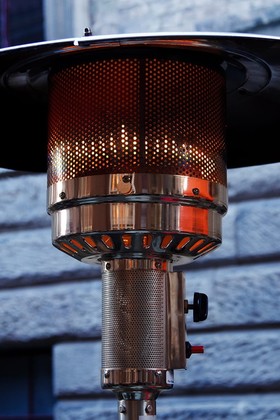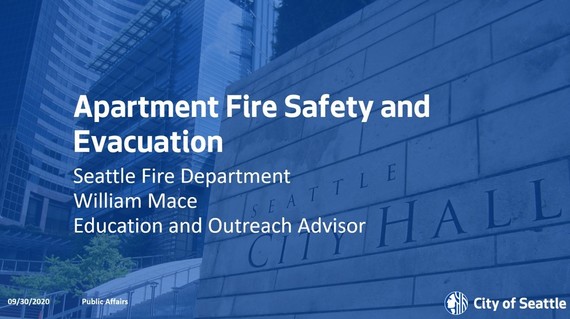 |
|
December 2020 Apartment Fire Safety |
|
|

As the pandemic continues into winter, more people are finding ways to socialize safely outside and seeking ways to stay warm while doing so. Outdoor fire pits, outdoor gas and electric portable heaters are being used in greater numbers. In addition to taking Covid-19 precautions, consider the potential risks associated with outdoor heating sources.
Outdoor Propane and Electric heaters
How to be safe:
- Make sure to read and follow the manufacturer instructions prior to using an outdoor heater
- Place heaters in a location where they cannot be easily overturned
- Keep anything that can burn at least 3 feet away from the heater
- Turn off portable heaters when the area in which they are used is not occupied
- Electric heaters should be used only where they can be plugged directly into the appropriate receptacles or extension cords of adequate current capacity
- Propane gas heaters need proper ventilation to avoid carbon monoxide build up
Fire Pits
Before deciding to light an outdoor fire in a fire pit, follow these safety tips to reduce the chance of an unintentional fire or injury.
- Ensure the outdoor fire is not more than three feet in diameter and two feet in height.
- Keep fire pits at least five feet from your home, vegetation or anything that can burn.
- Portable fire pits should be set up on a non-combustible surface such as patio blocks or concrete. Do not set them up on a wood deck or on grass.
- Keep a three-foot child and pet safety zone around your fire pit.
- Burn only clean, dry wood.
- Have fire extinguishing equipment readily available for use. This should include a shovel and two buckets of water, or a charged garden hose or fire extinguisher with a 4-A rating.
- Ensure the fire is continually attended by an adult until it is completely extinguished.
- Do not conduct fires on public property where fires are prohibited, such as in a park or on school grounds.
Outdoor Heating Safety for Businesses from the NFPA
Outdoor fire regulations and prohibitions from the Seattle Fire Department
|
|
|
|
Firefighter inspecting fire extinguisher tag in apartment building
A building's fire and life safety system is a critical component of fire prevention.
Even during the Covid-19 pandemic, firefighters are conducting inspections. They inspect buildings at least every other year to help ensure certain fire and life safety systems are functioning properly and requirements are being met.
Firefighters may also be looking for potential fire safety hazards such as fire doors that do not close properly, exit lights that are out, or blocked exits. The most common violations found include fire doors that are wedged open, fire extinguishers that haven’t been confidence tested, and defective or not confidence-tested fire alarms systems.
Decreasing the fire hazards in residential buildings is the primary goal of the inspection program. It is also a good opportunity for building staff to meet their local firefighters and ask questions.
For more information on systems testing, contact the Fire Prevention Division.
|
|
|
 The Seattle Fire Department is providing free virtual fire safety presentations to apartment residents and staff. Presentations for residents cover how to respond to a building fire alarm, what to do if a fire starts inside an apartment, and how to prevent and respond to a cooking fire on the stove. Staff members can learn the ways to assist the fire department before and during a fire emergency.
For more information or to schedule a presentation contact Public Affairs.
|
|
|
|